Books for those who want to plunge into the winter cool by this hot summer or MUST READ BOOKS for the winter mood
Share:
In this hot heat this hot summer, it's time to plunge into the world of fine literature and a fabulous snowy winter.
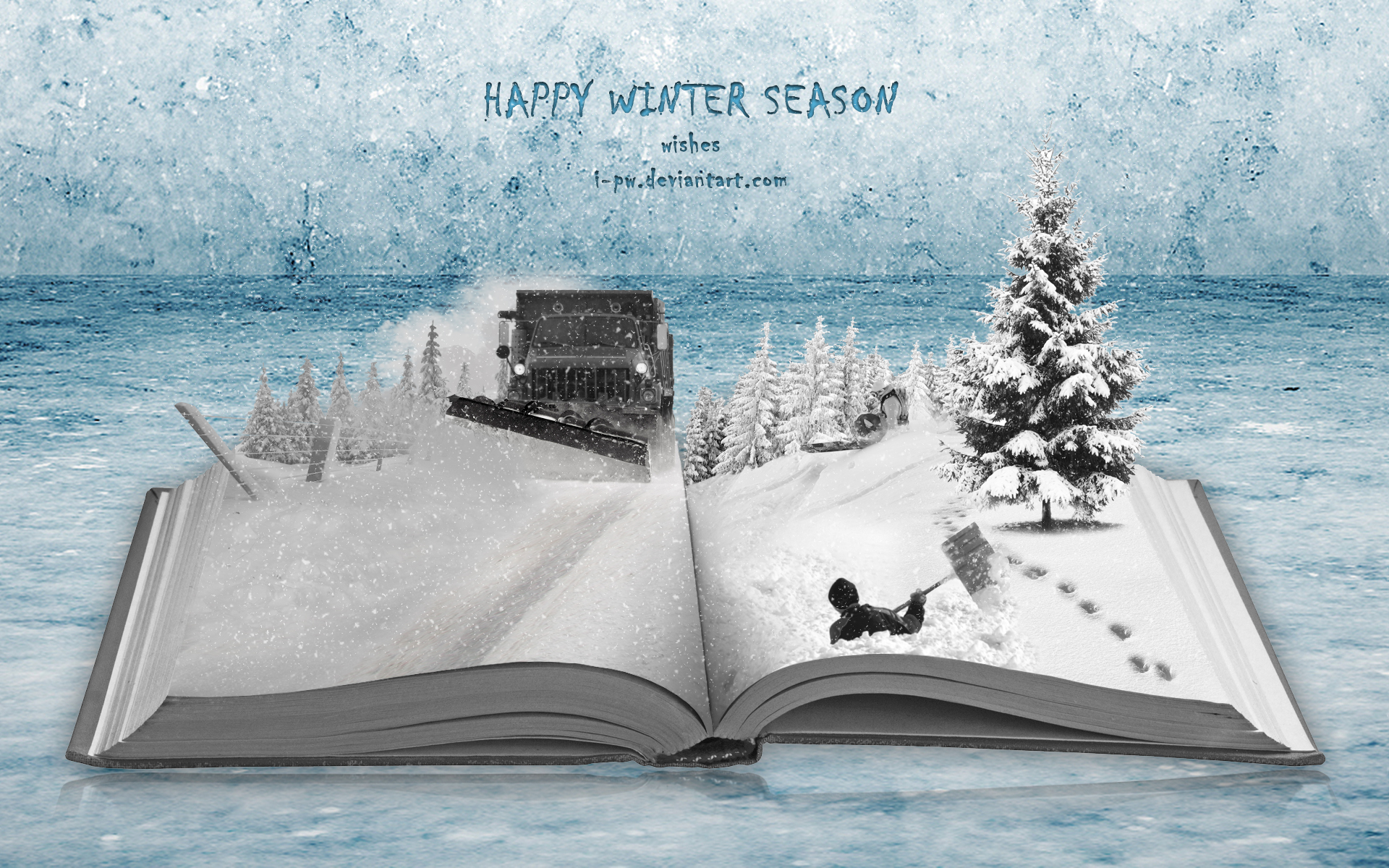
- George R. R. Martin
"The Ice Dragon"

The Ice Dragon is a children's fantasy novelette by George R. R. Martin, originally published in the 1980 anthology Dragons of Light.
The novel follows the story of a young girl, Adara, who befriends an ice dragon after the death of her mother. Martin has stated on his livejournal that it is not set in the same world as A Song of Ice and Fire's Westeros, commenting: "The world of Ice & Fire did not exist when I wrote THE ICE DRAGON." Despite this there are several press releases, book covers and commentaries stating that it is set in the same world.
On the strength and power of the ice dragon, thousands of myths and legends are built, because no one has managed to tame such a dangerous creature. When the dragon flies by the village, it is covered with ice crust. But little Adara was not afraid of him, for she was a child of winter - born in the most severe cold that people ever knew ...
This story from the acknowledged master of fantasy George Martin about the amazing friendship of a formidable dragon and a fragile girl is full of dedication and love.
Magic illustrations of the famous artist Luis Royo.
What Martin can do is subtly and skillfully create an effect of presence, so subtle that you can even feel the breath of an ice dragon, touch it with your hand.
Luis Royo is an illustrator artist working in the science fiction genre, author of covers of fantastic books, music albums, comic books.
"She did not remember when she first saw him, it seemed that he was always in her life - like a vision that appeared through the shroud of winter and cut through the shivering sky with the slow, serene waving of the blue wings."
- Holly Black, Cassandra Clare, Garth Nix & others
"The Steampunk"

Welcome to the anthology page, which contains fourteen stories in the steampunk genre - fourteen bizarre pictures of the past, the future and the not-quite-real! Fans of steampunk will find in this book everything they expect: there will be alleys dimly lit by gas lamps, and fearless street children, and steam engines, and unprecedented inventions. Writers and artists whose works have entered our anthology, rethought the romance and adventures of the steampunk, shuffled its elements in its own way and again blinded the whole genre from another test - or, rather, collected from other wheels and gears.
Contents of the collection:
- Some Fortunate Future Day (2011) // Author: Cassandra Clare
- The Last Ride of the Glory Girls (2011) // Author: Libba Bray
- Clockwork Fagin (2012) // Author: Cory Doctorow
- Seven Days Beset by Demons (2011) // Author: Shawn Cheng
- Hand in Glove (2011) // Author: Ysabeau Wilce
- The Ghost of Cwmlech Manor (2011) // Author: Delia Sherman
- Gethsemene (2011) // Author: Elizabeth Knox
- The Summer People (2011) // Posted by Kelly Link
- Peace in Our Time (2011) // Written by Garth Nix
- Nowhere Fast (2011) // Author: Christopher Rowe
- Finishing School (2011) // Author: Kathleen Jenings
- Steam Girl (2011) // Author: Dylan Horrocks
- Everything Amiable and Obliging (2011) // Author: Holly Black
-The Oracle Engine (2011) // Author: M.T. Anderson
Fourteen stories in the steampunk genre are fourteen bizarre pictures of the past, the future and the not-quite-real. Fans of steampunk will find in this book everything they expect: there will be alleys dimly lit by gas lamps, and fearless street children, and steam engines, and unprecedented inventions. Writers and artists whose works have entered our anthology, rethought the romance and adventures of the steampunk, shuffled its elements in its own way and again blinded the whole genre from another test - or, rather, collected from other wheels and gears.
Insane inventors, genius mechanics, mysterious assassins, motorist revolutionaries, steampunk elves and schoolgirls who defied the monopoly power - the events that have happened to them have spread to Canada, New Zealand, Wales, Ancient Rome, Australia of the future, alternative to California and even post-apocalyptic cities.
- Sarah Jio
"Blackberry winter"

A great love story - the mother's love for her child. There is nothing more perfect and stronger than this feeling. Sarah Gio intertwines the fates of heroines, one of them is our contemporary, and the second lived in the 1930s.
Seattle, 1933. Single mother Vera Ray kisses her little son before going to bed and goes to work at night to a local hotel. In the morning she discovers that the city is buried in the snow, and her son has disappeared. Not far from the house, in the snowdrift, Vera finds Daniel's favorite teddy bear, but there are no more tracks on the icy road. However, Vera is not used to giving up, she will do everything to find the missing child! Seattle, 2010. The reporter Claire Aldridge is writing an essay about the paralyzed May Day snowstorm. It turns out that the same bad weather already was almost eighty years ago, and during the snowfall the boy disappeared. Claire takes up this matter without enthusiasm, but soon discovers that the story of Vera Ray is intertwined with her own destiny in the most unexpected way ...
A loving mother will do anything to return her child, such is the main idea of Sara Gio's novel "The Blackberry Winter".
In this work, the American writer uses her favorite technique - a parallel narrative about two time periods - past and present. With each page in front of the reader there are more and more new threads connecting two women, two mothers, two people who survived the terrible grief.
Can journalist Claire uncover the mystery of Daniel's disappearance after so many years? What links her life to the life of the Faith? The answers to these questions can be found in the book "The Blackberry Winter".
- Salman Rushdie
"The Enchantress of Florence"
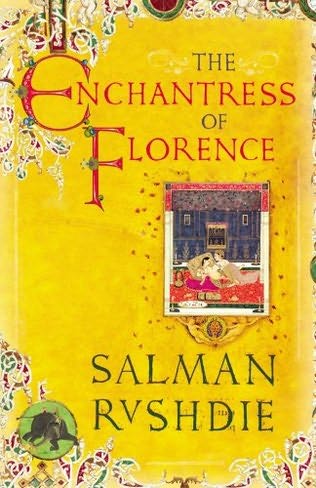
The Empire of the Great Moguls, the mighty Akbar, Florence of the sixteenth century, with its philosophers and artists, warriors and courtesans, the brilliant mind of that epoch - Niccolo Machiavelli, great geographical discoveries - all developed into the brightest mosaic, each part of which is the subtlest shade, Cloth. At the court of the ruler of the Mogul Empire, a gold-haired foreigner appears and declares that he is the uncle of the emperor ...
Fictional and real characters, East and West, history and magical realism. This is the story of everyone - the history of everyone, the history of the world - and the history of the individual, and this world is still full of secrets, and the most incredible can turn out to be true.
The light of the past, if sent to the right angle, is capable of highlighting the present better than any searchlight.
The book shocked. I read other works of Salman Rushdie, that's why I already got an impression of his style, but this book is simply out of the ordinary!
This is a fairy tale and a myth and a historical essay - all in one. The Mughal Empire in India and the Middle Ages in Florence. Everything is brightly and colorfully described, intertwined, connected.
It was not without Indian features, with cunning intertwined bonds, which, by the will of fate, sprawled their web from India to the Middle East, eventually reaching the Italian expanses.
The reflections of the bored emperor emphasize the philosophical side of the work. Eternal thoughts about life and justice will find echoes in the hearts of many readers.
Adventures with pirates, frank prose (sometimes even very frankly I would say), a completely open text without complexes ... You tell me it's impossible to fit into one book? Until now, I have also considered, but having read the Florentine sorceress has changed her mind. In this book, not only all this came in, but elegantly intertwined with oriental patterns in one fabulous story in places.
If you think that you know the work of Salman Rushdie, I recommend reading this book in order to break your opinion about it.
- Sarah Addison Allen
"The Sugar Queen"
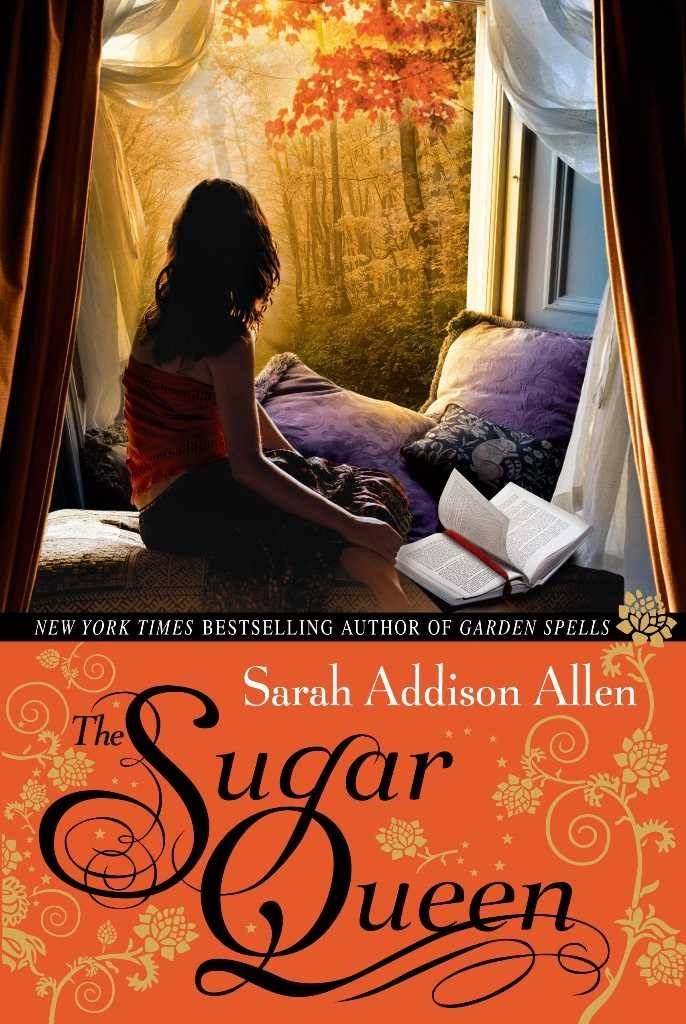
A cozy book, telling about the girl Josie, who, trying to "atone" her children's pranks, spit on her life and devoted herself entirely to caring for the tyrant. So it would be, if one day in her closet there was not a certain Della Lee Barker, a cheerful person who flatly refused to go out until she helped Josie in her personal life.
Josie Cirrini lives in a small resort town with her despotic mother and dreams of travel and adventure. She is excruciatingly shy, she has no friends, and the only thing that somehow brightens up her gray life is the sweets and romance that she secretly absorbs from the mother in incredible quantities, hiding herself in her dressing room. One day, looking into her cache for another sweet portion, she finds out there Della Lee Barker, a local brawler and outrageous tranquility, and from this moment the measured life of Josie turns into a dizzying series of incredible events, some of which can only be explained by magic...
- Milorad Pavic
"The Writing Box"
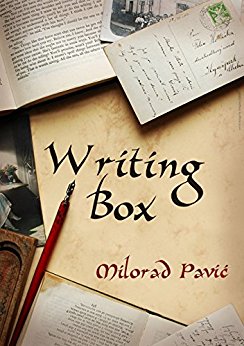
Firm inviting hypertextual labyrinth of Milorad Pavic. Studying an ancient casket for writing, exploring each of its branches and the hidden corner, its smells and sounds, the writer turns into an exciting journey through the cosmos of the human soul. Here the heroes separated by time and space can remember the forgotten names of love and finally find themselves and each other. In every work of Pavic, a passion for life and a passion for the book itself are combined in a bizarre way.
"If you lift the lid and open the box, we will have a surface for writing. It is bounded by a brass frame, provided with some auxiliary means, providing access to different compartments and parts of the box. So, in the frame are two locks and one recess for the inner key, which is larger in size than the key from the outer lock. In form, it is a tube with a triangular hole at the end. In the past, similar instruments were used by dentists to tear teeth. Brass, from which the key is made, in places is eaten and covered with a green bloom. At the top of the box is the first internal lock. When you close this lock with an internal key there is a special effect. At the bottom of the box, out of the hole there, when the key is turned, the screw protrudes. To ensure that during the pitching box does not fall off the table or from another surface on which it stands, with the help of the mentioned key and screw it can be fixed on a wooden base. And while the box is locked, the screw remains inaccessible "...
This novel of the famous Serbian writer Milorad Pavic is characterized by the polysemy and non-linear orientation of the narrative, free treatment of space and time. "Inventory" of a randomly purchased antique box for writing supplies, examination of its offices and secret alleys turn around revealing the space of the human soul. This edition also contains M.Pavich's essay "To write in the name of the father, in the name of the son or in the name of the spirit of brotherhood?" And articles by Y.Mikhailovich and D.Ramadansky, devoted to the prose writer.
- Michael Punke
"The Revenant: A Novel of Revenge"
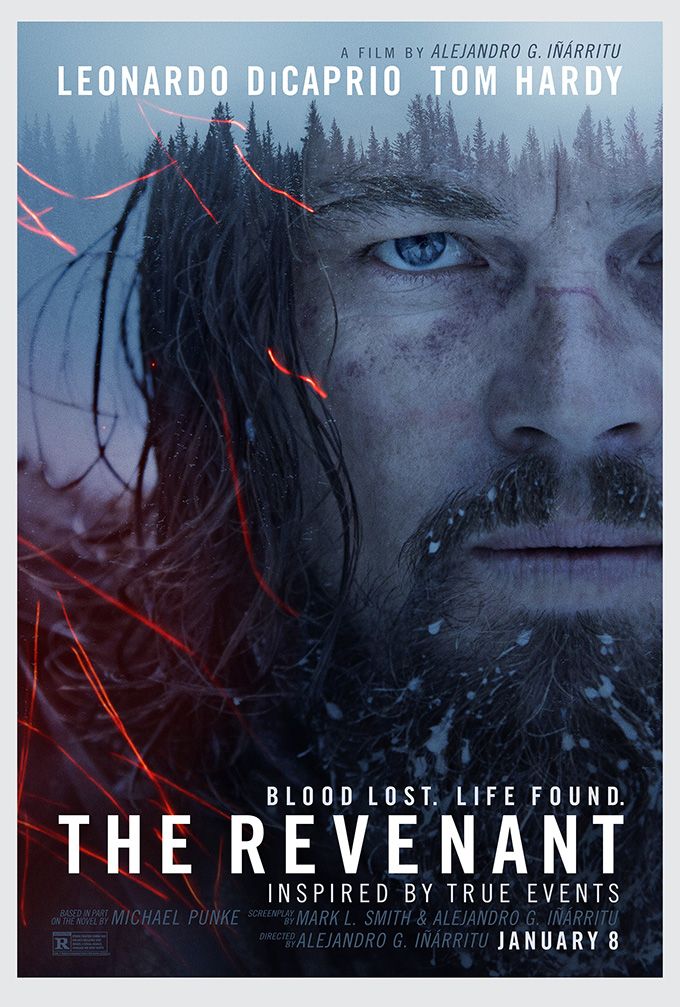
A novel based on real events about revenge, courage, endurance and generosity. Wild West ХІХ century. These lands are the lot of real men. Lunatic and weaklings do not survive here. Hugh Glass, the mountaineer and pioneer, a member of the expedition of General William Ashley, who investigated the origins of Missouri, is in terrible trouble. To meet hand to hand with an angry grizzly bear, hoping only for a hunting knife - and to resist in a duel - this alone would be enough to become a hero. But fate only began to test Hugh Glass for strength. Considering that the injuries of the hunter are deadly, the comrades who volunteered to look after him, robbed him and left him to die - but he survived. Also has remembered. He was to pass more than 300 kilometers through the territories. Without weapons, food and water, with a broken leg and a torn back. He passed. Hugh Glass was very fond of life - and very much wanted to take revenge on those who decided to take it from him.
Remark for the fans to refuse to read books, the screen version of which they saw: the book is not so! In general, absolutely, absolutely not like in the movie! But to enjoy this work in full, it is worth reading before watching the movie. Why? Because life is not a movie, where there are heroes, anti-heroes and a clearly delineated plot. In life, we are all heroes, then antiheroes, and stories with an intriguing outset may end in a very ordinary ending. So it is quite natural that the picture on the screen looks brighter and more spectacular than the sad reality. Of course, I was a little disappointed. The filmmakers did not show the ordinary person to whom Hugh Glass appeared in the book, but the legendary image, born more from human fame than from historical facts. Panke keeps closer to the truth, but does not hold out to the "novel about revenge" claimed in the title. Why did I like this book and why is it worth reading? First, for the sake of a real biography of the characters. The film presents only a small episode from the life of Hugh Glass, which now looks to me far from the most impressive! Sitting on a laptop with wireless Internet, it seems amazing that some 200 years ago, when the heroes of this story lived, there were white spots on the world map and even the development of the United States has not yet ended. Then the real adventure was the discovery of new lands, and one of the most heroic professions is the profession of a sailor. So Glass before becoming a trapper, managed to pass the way from the cabin boy to the captain of the ship and even to go into a dangerous skirmish with pirates of the Caribbean Sea. He seemed to have lived two full-fledged and such unrelated lives: one ended at 36 with an exit to the land and a cardinal change of activities, the other started with a meeting with the grizzly bear on the Grand River. But I'm sure that even about the first life of Glass could be written no less fascinating book, if more documentary evidence were preserved. Secondly, for the sake of historical information. I, for example, have an extremely tense relationship with history. Due to the fact that no dates are kept in my head, I do not know how to synchronize history with geography. Let's say I can know about the fact of the Second War of Independence, about the fact of Mexico's war with Spain and about the fact of piracy in the Caribbean, but when I read that while the USA was wetting Spanish ships, the US was wetted by British ships, and pirates Caribbean Sea wetted everyone, then I'm sincerely surprised, because earlier I just did not realize that it was happening simultaneously in the same place. Thirdly, for the sake of descriptions of nature and life. Here Michael Panke, the US ambassador to the WTO, is approaching, I'm not afraid of this word, to the masters of the genre - James Curwood and Jack London. If in the description of the heroes he adhered to the meager biographical facts, then to the exposition of their adventures came up with all imagination. Unlike the film, in the book Glass fights primarily with nature. Armed only with his bare hands and savvy, he resurrects the experience of living with the Indians in order to survive in the wild nature of the uninhabited region: heals wounds, puts traps, and makes boats. Read about this was the most interesting, so it's a pity that the hero's path to civilization took only about 30% of the book.
Why am I still disappointed? I do not know to what extent Panke took part in writing the script for the film, but he, at any rate, is listed among the screenwriters. Therefore, I'm a little sad that the "novel about revenge" turned out to be only a film - perishable, piercing, but leaving hope that for every shit, sooner or later there will be Hugh Glass, who will make retribution literally from the other world. In the book, Glass is simply a survivor; A man who surprised even the Indians with his history. In reality, he did not have a son from an Indian woman, whose presence in the film intensified the dramatic effect. In this case, the main antagonist, John Fitzgerald, in the book looks even more dangerous. I tried to find details about the nature of the damage that Glass received in the fight with the bear, but the exact information does not appear to exist. Therefore it seems improbable to me that a person with a hole in the trachea could survive, given the lack of hygiene and the lack of anti-inflammatory drugs. In this sense, the cinematic version looks more affluent - there, at least, no emphasis is placed on the trauma of the throat. I also saw the improbable miraculous salvation of Glass on the principle of deus ex machina and the episodes "everyone will die, and I will grapefruit", which the book abounds. However, I'm sorry that the biography of the characters was cut out of the film adaptation, which gives a deeper understanding of their characters. I am grateful for this book for being very informative and making me climb the Internet to close the white spots on the map of my knowledge. Those who lazily read the book and independently look for differences from the film, I recommend this article. P.S. Funny, but in reality the real hero of the Wild West was Jim Bridger - the youngest of the two mountain-men who threw the beheaded bear Hugh Glass to certain death in the middle of the forest. Bridger was one of the first to cross the Rockies and visited the territory of the modern Yellowstone National Park. In his honor put monuments, his name is called various objects in the US, he is singing songs and making films. And Bridger lived to the incredible for those times, especially for the man of his way of life, 77 advanced years.
Read the story that formed the basis of the blockbuster "The Revenant" with Leonardo DiCaprio and Tom Hardy.
- Sharon Owens
"The Tavern on Maple Street"

The fate of the heroes of this incredible Christmas story is weirdly intertwined and converging in an amazing place full of mysteries and wonders - in the tea room on Mulberry Street, where delicious desserts are served and where quite unexpectedly you can receive a message from a Hollywood star.
Probably, in each town there is a small and cozy cafe. A place where not too lazy to go through the whole city, because it brews the best coffee and bakes the most delicious buns.
In the tea room on Mulberry Street, judging by the description, the most amazing cheesecakes, which I just devoured with my eyes. It's a pity that you can not eat them.
A lot of people come to this old, seen kind of tea. Everyone has a secret, a dream or a plan. Do you want to know what its visitors are thinking about? Do you want to know what its owners live by?
The lives of the characters do not intersect very much, but they converge in one place. In the tea room of Muldoon. For some it is a support, for someone a consolation or simply a place for reflection. Everyone has found something of their own here. Or lost?
The book is very soft. Naturally, with a fairytale fleur. Or maybe it seemed to me so, because it was intended for me as a pre-holiday reading ... In any case, behind this book, I very happily spent time worrying for the heroes, laughing at their tricks, being touched by romantic actions.
And I want every story in life to end like this novel ...
A wonderful rest for the soul between serious books. Something like the novels of my beloved Fanny Flagg. Perhaps there is a kind of idealistic utopia here, but, dammit, sometimes you want such everyday everyday miracles. I want to believe in a happy ending story. I refuse to admit that this can not be). It is quite possible for a fat woman to take revenge for years of insults and humiliations; A married couple, after many years of misunderstanding and misunderstandings, is very much able to find happiness; The twin sisters are already at that age, to forgive the deceased father and mother a lie and not to fall into despair; Two souls in love with flowers and trees can still find their happiness; All ahead of the young artist, and the couple, separated by absurdity many years ago. And all of them in a bizarre way are united by a small old tea-room on Mulberry Street. The quaint corner of coziness and warmth, in which one wants to return, is worth visiting once. A place that unites some, gives hope to others, gives the third a desired peace to the third. It can both separate and quarrel. This is as lucky. Every hero of this amazingly attractive story has a secret of happiness. For some it's a delicious meal, someone loves to cook, someone likes the public, someone likes a modest home. Usual life. Somewhere boring, somewhere cheerful, sometimes dangerous, with skeletons, sometimes peeping out of old chests. Nice, easy, at ease. I like to read this. I like to swim in the world of sometimes strange, but very interesting people. I love when they get what they deserve. Not only bad, but also those who deserve modest little everyday joys. Read to everyone who is at least a little romantic. Read those who want to plunge into the easy world of ordinary everyday life with a bunch of household details. In general, this novel is not for all, but I recommend it.
by Akhan Tuleshov
adebiportal.kz - Literary Portal
Share: